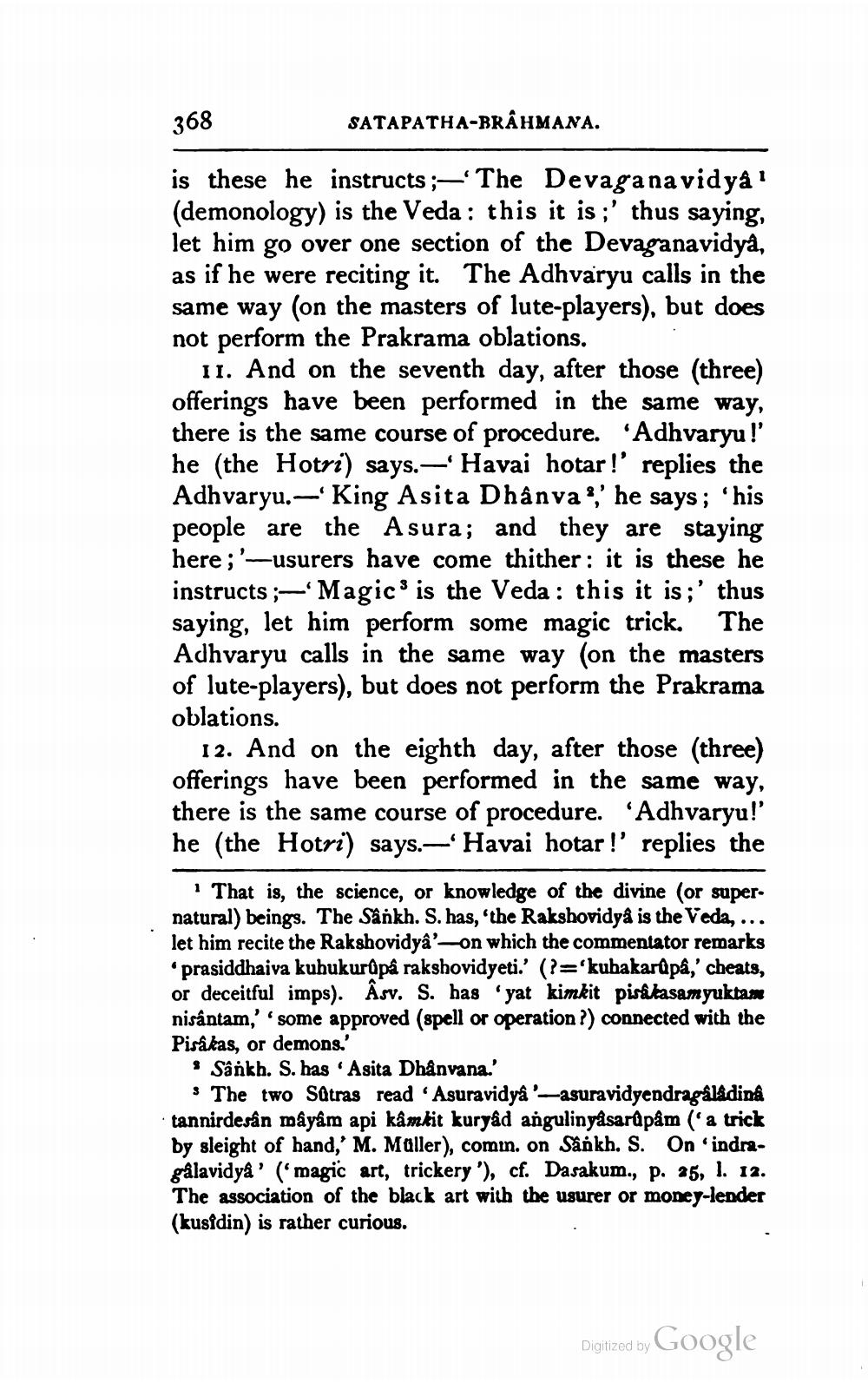________________
368
SATAPATHA-BRÂHMANA.
is these he instructs ;—The Devaga navid ya' (demonology) is the Veda: this it is ;' thus saying, let him go over one section of the Devaganavidya, as if he were reciting it. The Adhvaryu calls in the same way (on the masters of lute-players), but does not perform the Prakrama oblations.
11. And on the seventh day, after those (three) offerings have been performed in the same way, there is the same course of procedure. 'Adhvaryu!' he (the Hotri) says. — Havai hotar!' replies the Adhvaryu.— King Asita Dhânva?,' he says; 'his people are the Asura; and they are staying here; '-usurers have come thither: it is these he instructs ;-Magicis the Veda: this it is;' thus saying, let him perform some magic trick. The Adhvaryu calls in the same way (on the masters of lute-players), but does not perform the Prakrama oblations.
12. And on the eighth day, after those (three) offerings have been performed in the same way, there is the same course of procedure. 'Adhvaryu!' he (the Hotri) says.—' Havai hotar!' replies the
That is, the science, or knowledge of the divine (or supernatural) beings. The Sänkh. S. has, 'the Rakshovidya is the Veda, ... let him recite the Rakshovidya'-on which the commentator remarks
prasiddhaiva kuhukurūpå rakshovidyeti.' (?='kubakarûpa,' cheats, or deceitful imps). Asv. S. has yat kimkit pisikasamyuktan nisántam,'' some approved (spell or operation ?) connected with the Pisakas, or demons.'
. Sankh. S. has Asita Dhânvana.'
- The two Sotras read Asuravidyâ ' -asuravidyendragáladina tannirdesân mâyâm api kâmkit kuryâd angulingåsarûpåm ('a trick by sleight of hand,' M. Maller), comm. on Sânkh. S. On indragålavidyâ' ('magic art, trickery'), cf. Dasakum., p. 25, I. 12. The association of the black art with the usurer or money-lender (kusidin) is rather curious.
Digitized by Google




